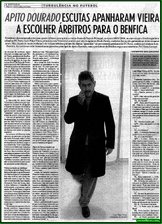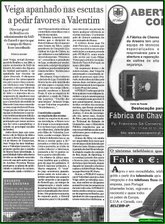A heritage winner
Porto, the city that gives the name to port wine, is a terrific mix of themedieval and the modern side by side, says Ranjita Biswas
The Romans called it Portus, the locals, Porto and the English, Oporto. Call this city by any name, and it would still be as beautiful, situated as it is at the mouth of the Douro River flowing into the Atlantic in northern Portugal.
Porto has been inhabited since at least the fourth century. So, its architecture is varied, with the medieval and the modern side by side. Many streets look as if they've hardly changed since the Middle Ages and the houses have colourful tiles, called azulejos, and wrought-iron balconies. Porto flaunts its ancestry charmingly and deserves its World Heritage Site tag.
This is Portugal's second-largest city and has a different flavour from the country's ot-her big cities. It's more mercantile than laid-back Lisbon and not like the studious university town Coimbra. Porto is also referred to as Cidade Invicta, or the invincible city, because of its resistance to the Cerco do Porto (Porto's Siege) during the 1832-34 civil war.
Bring a pair of sturdy shoes because parts of the city are quite hilly with many buildings built into the granite cliffs that overlook the Douro.
My first port of call in the morning was the historic downtown area. The Clerigos Church and Tower dominates this area. The tower was the tallest structure in Portugal when completed in 1763 and ships used it as a landmark while anchoring near the Cais da Ribeira riverbank. If you have the inclination, and the energy, climb up the 200-plus steps to the top to get a wonderful bird's-eye view of the city.
In this area with its Lion's Square is another landmark of Porto: the Lello & Irmao Bookshop, which is more than a century old and has been called the third-best bookshop in the world (I don't know if that's true or not). On entering the Art Nouveau- style bookstore, you will see a beautiful, ornamental staircase in rose pink surrounded by a wooden panelled ceiling with stained glass and Lello's motto 'Decus in labore', or 'there is honour in labour'.
J. K. Rowling lived in Porto for a decade as an English teacher and frequented the Lello bookshop. In fact, it is said that the library at Hogwarts School is modelled on this bookshop.
Walking in the alleys of the Ribeira area, browsing quaint souvenir shops, I discovered an extremely new addition in the city. Apparently opened only this summer, the World of Discoveries Museum is the brainchild of Douro Azul, a well-known tour operator. The theme of the museum and theme park is the Age of Discovery, when sailors of this seafaring nation crossed the world in the Middle Ages, mainly to discover the spice routes to India. Later they went as far as Macau and the Philippines and established colonies in those places. Brazil became a colony only later.
The ushers in the museum receive you wearing medieval togs and beautiful Anna Torres, the general manager, showed me around. Then I was led to 'real' boat parked on a canal, which felt like an indoor Venice. As the boat moved, at every corner there was a piece of history on tableaux, from Africa to India to China, with information about their flora and fauna, the dangers faced by the explorers, etc.. The most thrilling scene for me, as an Indian, was the tableau where Vasco da Gama pays his respects to the zamorin, the ruler of Calicut, on his first voyage.
For lunch, I decided to go to the Praça da Ribeira Square on the waterfront. It was a good idea even though it was a bit touristy with food stalls galore and cheap souvenir kiosks. Nevertheless, the heritage buildings with their filigreed balconies, the washing flapping in the wind and the double-decker Dom Luis Bridge in the background (when it opened in 1886, it held the record for the longest iron arch in the world) made it a great place to hang out.
Also on the river, I could see boats floating along as I dug into a Francesinha, literally 'little French lady', and which lays claim to be one of the world's 10 best sandwiches. The layered toast has all kinds of meat inside: beef (you can opt out), pork, ham, et al, and it's covered with cheese and a spicy sauce, with the option of including French fries on top. Before you ask, yes it is rich. A beer, not wine, is recommended with it.
For dinner try a Bacalhau — a salted codfish, fresh and succulent, cooked in many different ways here.
Across the river I could see the beautiful waterfront of Cais da Gaia. A river trip is a must and so I crossed over a bridge (there are six in all between the two parts of the city) to board a boat at Vila Nova de Gaia. The waterfront is also lined with 'caves', cellars of well-known companies producing port wine. This region is the world's oldest defined and regulated wine region, going on since 1756. A wine tasting tour is very popular and a must even if you don't drink. [daqui]

.jpg)































.jpg)







































.jpg)









0 comentários:
Enviar um comentário